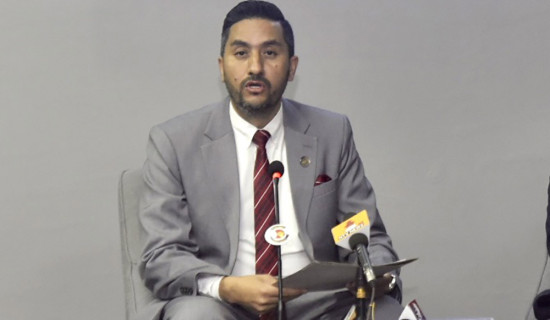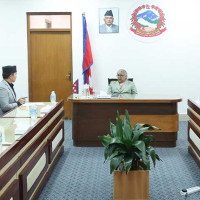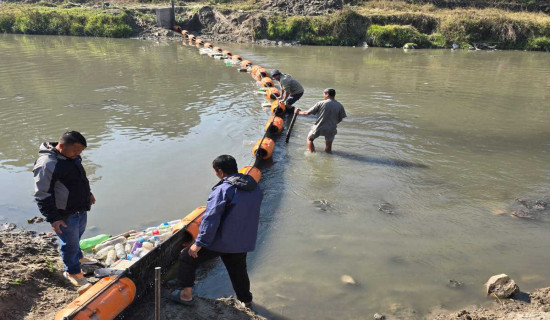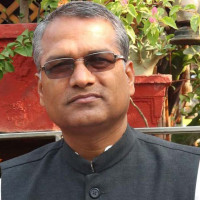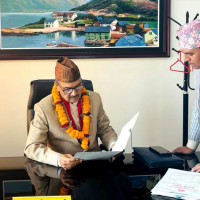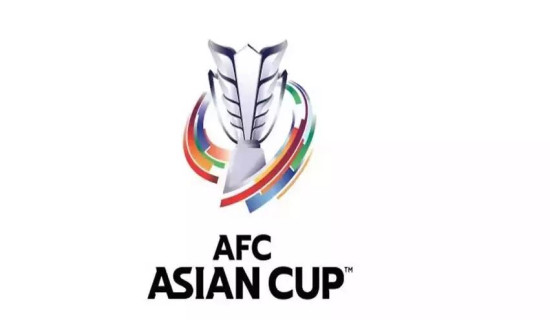- Sunday, 21 December 2025
Safety lapses of school buses put children at grave risk
Kathmandu, Nov. 4: A 13-year-old student succumbed to injuries he sustained after colliding with a tree while taking his head out from a window of a moving school bus in the capital on Thursday.
He was a fifth grader in Best’s Elementary Montessori School of Lazimpat in Ward No. 2 of Kathmandu Metropolis.
The boy was from Samakhusi, Kathmandu. The accident took place at around 3:35 pm on Wednesday immediately after the school bus (Ba 1 Ka 4642) left the school compound.
“The boy’s head collided with a tree right outside the gate of the school while he was watching out from the window of the last seat of the bus,” read a statement from District Police Range, Kathmandu (DPRK).
As per the statement, the injured child was rushed to the Tribhuvan University Teaching Hospital at Maharajgunj by the school administration. However, he died during treatment at 2:21 am on Thursday.
A team from Police Circle, Durbar Marg, had arrested the school bus driver Roshan Adhikari for further investigation. Officers at the Police Circle informed that the bus also had a co-driver and a caretaker.
Nepal Police officers also stressed that the school bus should have proper guard rail along the windows so that a child cannot take his head out while a bus is running on the road. It is one of the standards mentioned in the law.
Section 3[2(C)] of the School Bus Directives, 2018, states that at least three horizontal round metal/round aluminum tube should be placed along the windows of a school bus mandatorily.
An investigating officer at Durbar Marg Police informed that the school bus of Best’s Elementary Montessori School only had two bars along the windows with a wide gap in between.
The directive also stipulates the standard for seat capacity of a school bus. According to Section 5, a school bus can carry 1.5 times the capacity while transporting students aged under 12. Meanwhile, bus carrying students over 12 years of age cannot carry any more than its capacity.
A school bus should also have a bar for students sitting in the seat in front of the door, and it mustn’t be driven at a speed more than 40 kmph under any condition.
During a surprise check organsied by the Kathmandu Valley Traffic Police Office (KVTPO) in the last week of July this year, a 29-seat bus of Brihaspati Vidyasadan was fined for carrying more than 50 students. Similarly, a 40-seat school bus was also fined for carrying 71 students.
Similarly, on July 31, six school and college bus drivers were penalised for drink and drive during an early morning surprise check while the buses were transporting students.
“School buses have certain standards to abide by compared to local passenger vehicles because they should be safe for children. However, we can see schools using local public vehicles to pick up and drop off students and those vehicles often have more students than capacity,” said Deputy Inspector General of Police (DIGP) Mira Chaudhary, chief of KVTPO.
DIGP Chaudhary stressed that the schools, which are responsible for teaching many aspects of safety to the students, are themselves operating unsafe vehicles to transport them.
“It feels odd to request schools and colleges to be concerned about the students’ safety by abiding by prevailing laws and standards. We plan to call stakeholders like PABSON, HISSAN and parents’ association to find a way to ensure safe school transport,” DIGP Chaudhary told The Rising Nepal.
The KVTPO had earlier called the stakeholders and requested the schools to make their buses follow traffic rules as well as school bus directives properly.
Talking to The Rising Nepal earlier, PABSON’s Chairman
DK Dhungana said that they had issued a circular across the
schools asking them to follow the directives.
“The investigation will show who was mainly responsible for the accident. Parents send their children to school on the school bus believing it to be the safest form of transport. Schools shouldn’t let this trust break,” said Superintendent of Police (SP) Dinesh Raj Mainali, spokesperson for DPRK.
The directives state that other than the Department of Transport Management and its offices, all stakeholders are responsible to implement the standards. However, inspecting school buses hasn’t been much of a priority for those in authority, except for the traffic police.



